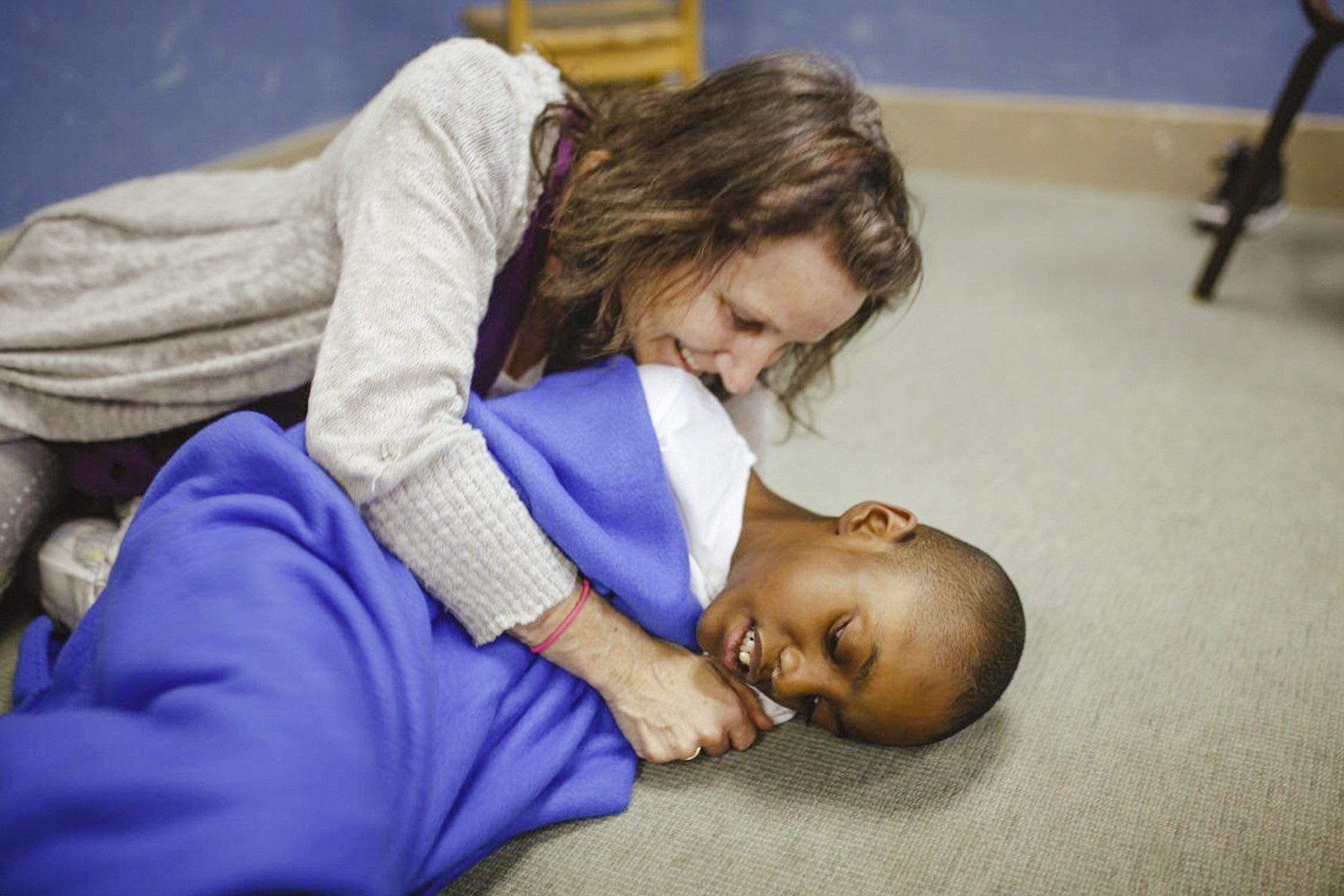To Stand Tall
As 20-year-old journalism student in Waco, Texas, I was assigned to photograph the ARC of McLennan County’s daycare. When I arrived, I met a small team of trained women who gathered each day in an old church basement to care for young people with developmental disabilities. I spent two days photographing the daycare, speaking with the teachers and spending time with the students, most of whom were nonverbal.
Years later, this project still holds a special place in my journey toward storytelling within vulnerable communities. I’m so grateful for the people who trusted me to document these tender moments and caring relationships.
Cody
Brandy and Cody
“Cody is very smart. It’s just hard for him to communicate. You can tell by his pitch when he’s excited or he’s hurt ... Everybody has a different love language. When Cody is grabbing onto you, he’s trying to show affection.”
“We’re trying to get Cody to stand tall, to stretch. His legs and his arms have been bent for so long, that they won’t straighten. So we’re just trying to get him to stretch up tall and see how tall he really is.”
Brandy and Cody, practicing standing tall
Geri
“I’ve been working here three years. It’s a joy. I love it. But it’s hard. It is really hard. A lot of our students, when they’re in school are told, ‘Oh, Honey, you’re just broken. You need to sit over here and just watch what we’re doing.’ Well, yeah, you’re different. But you’re not broken. You are still capable. You talk a little funny? That’s okay.
One of the young men the other day told me, ‘People think I’m weird.’ And I said, ‘You know what? People think I’m weird, too. Nobody in this entire universe can say they are normal because there is no such thing. Everybody has a quirk. Everybody has something that makes them a little different.’ And getting these kids to accept that is a hard thing to do. You just say it everyday. ‘Yes, we’re weird. We like weird. Weird is okay.’
I jump to the defense of people who can’t defend themselves a lot quicker than I did five years ago. If I see any of these kids being less-than, you don’t want me to open my mouth because I will teach you what-for. Do they do the appropriate things all the time? No, they don’t. But that makes them no less human and no less wonderful than you or me. They deserve to be treated just like everybody else.
Five years ago, I just kept my mouth shut. I watched. I was a bystander. I didn’t say nothing. Now, let me see you do something wrong to somebody who is a little less-off than you are. I will say something. It’s up to us, whoever works with the disabled community. It’s our job to teach everybody else how to talk to them and how to interact with them.”
Geri talks with Victoria, a student who is nonverbal but can communicate through American Sign Language.
Daniel
“Daniel is very tech-savvy. And he loves Disney. Any Disney question you ever have, ask him. He can tell you. He’s 18 years old but he still has two more years of school. And then he’ll age out of school and he’ll probably start to come to our opportunity center.
A lot of kids with autism, when you talk to them, there’s several tracks going on at one time. It’s just a jumble. Daniel’s probably got four different things going on and he’s thinking four different things all at the same time. ”
Melinda, a teacher at the ARC, with Daniel.
Raymond
“Raymond is bilingual and he got a certificate for the A-B honor roll. He can be stubborn when he wants to and he can be just as sweet as pie if he wants to. I think a lot of his, ‘I don’t know’ or ‘I don’t remember’ is a put-on.
His brother lives in West and I asked him one day, ‘Do you take Raymond out to West with you?’ And he said, ‘Every weekend. I couldn’t survive without Raymond. He’s my baby brother and I love him.’”
Taylor
Taylor
“Taylor is sweet and loving and very emotional. She’s very observant and smart. Her laugh is contagious. Even when it’s difficult, there are ways for her to communicate with us. You just have to take the time to stop and learn each child. She’s trying her best to communicate.”
Desmond
Brandy hugs Desmond during a difficult moment.
“We just hold him. The tears will start coming and it’s like he’s coming apart from the inside out and he can’t help himself and he needs you to hold him in.
And when Desmond is happy, it’s beautiful.”
Desmond and Brandy









